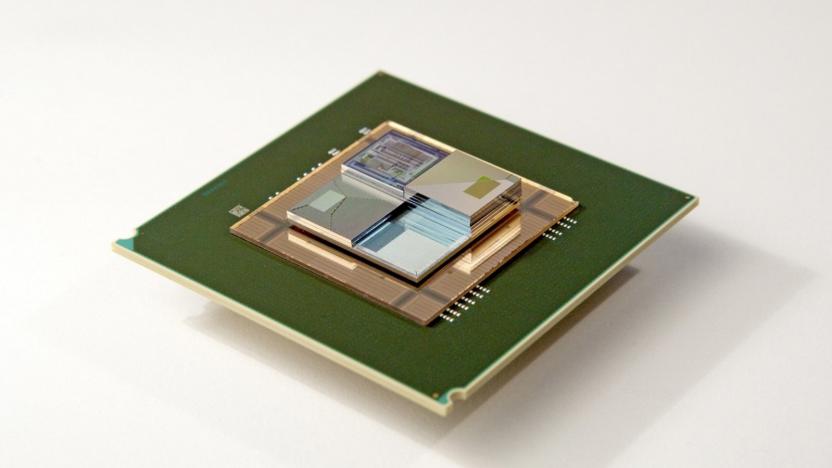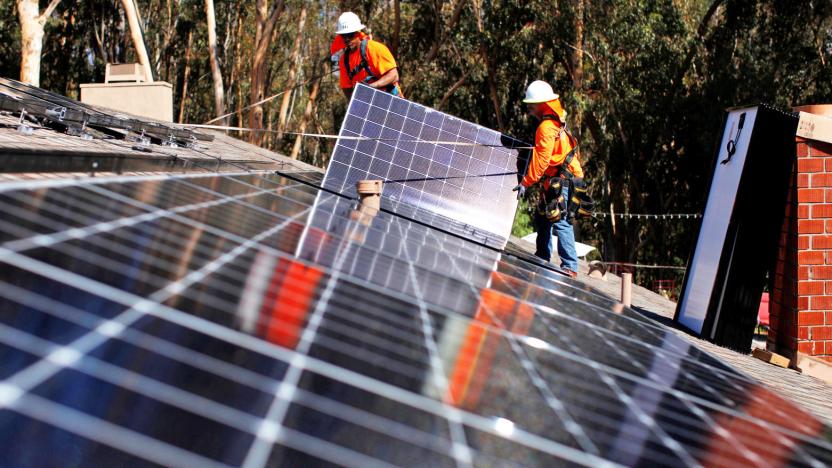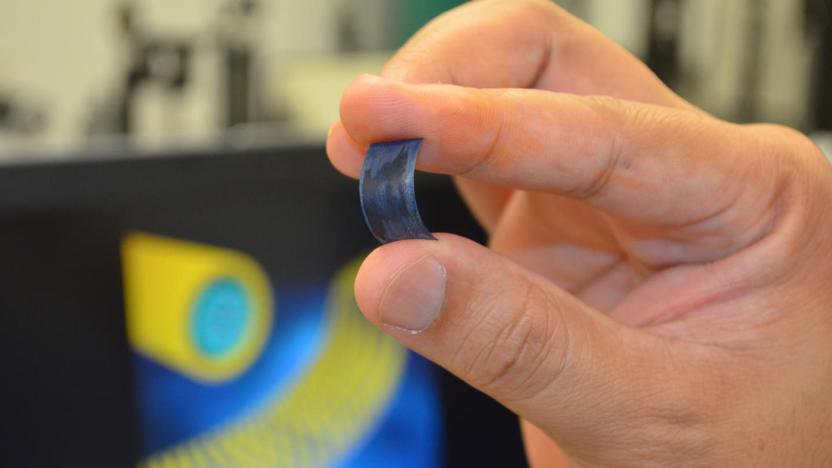TL17CHRG
Latest

Nanomaterial charges everyday batteries in seconds
If you want a battery that charges in seconds rather than hours, you go for a supercapacitor. There are some catches to that, though: either you give up the long-lasting energy of a chemical battery (like the lithium pack in your phone) or have to resort to exotic storage tech to get a long lifespan. Drexel researchers think they have a better balance. They've developed electrodes based on a nanomaterial, MXene, that promise extremely quick charging times for chemical batteries. The near-2D design combines an oxide-metal 'sandwich' with hydrogel to create a structure that's extremely conductive, but still lets ions move freely as the battery builds up a charge. In the lab's design, you can charge MXene electrodes within "tens of milliseconds" -- you could top up a phone in seconds or an electric car in minutes.

Tesla is building world’s largest backup battery in Australia
After blackouts left 1.7 million residents without electricity, Elon Musk famously guaranteed that Tesla could supply 100 megawatts of battery storage in 100 days. The company has announced it will do just that by installing a Powerpack battery storage system that can run over 30,000 homes. The 100-megawatt project "will be the highest power battery system in the world by a factor of three," tweeted CEO Elon Musk. It will back up the 315 megawatt Hornsdale Wind Farm, charging during low energy usage and providing electricity for peak hours.

Seaweed could be the key to long-lasting electric car batteries
Lithium-sulfur batteries are theoretically ideal for powering gadgets. They have more than twice the energy density of lithium-ion packs, but at a much lower cost thanks to sulfur's dirt-cheap price. There's just one problem: sulfur dissolves, giving the battery a short lifespan. That's where Berkeley Lab might help. It recently discovered that a derivative of red seaweed, carrageenan, can stabilize a lithium-sulfur battery and make it practical for more devices. If you use the seaweed derivative as a binder (the "glue" that keeps a battery's active materials together), it reacts with the sulfur and prevents it from dissolving. The ultimate goal is to produce cells that last for "thousands" of charging cycles, or better than many batteries you see today.

The Navy built rechargeable batteries that won't explode on you
The Navy, the airline industry and Samsung all have a major problem with lithium-ion batteries. Specifically, they tend to catch fire more than most people would like. But that could change soon thanks to a new breakthrough from the US Naval Research Laboratory (NRL) that allows for safe, rechargeable nickel-zinc batteries with a similar performance to Li-ion cells, but without all the flames.

Leaf veins may lead to longer battery life
There have been many, many discoveries that promise longer battery life, but one of the latest is rare in taking its inspiration from one of the most common structures in nature: the leaf vein. Scientists have crafted a porous material that mimics the highly optimized flow of nutrients in plant leaves. The team used an evaporation-based process to arrange zinc oxide nanoparticles into networks with pores of various sizes that behave like you'd expect in a leaf, maximizing the transfer of material while minimizing the necessary energy.

Tiny liquid battery cools chips while powering them
Scientists from IBM and ETH Zurich university have built a tiny "flow" battery that has the dual benefit of supplying power to chips and cooling them at the same time. Even taking pumping into account, it produces enough energy to power a chip while dissipating much more heat than it generates. The result could be smaller, more efficient chips, solar cells that store their own energy or devices used for remote monitoring that don't require external power sources.

Liquid battery could last for over 10 years
Modern batteries aren't hampered so much by their capacity as their long-term lifespan -- a lithium-ion pack can easily become useless after a few years of heavy use. That's bad enough for your phone, but it's worse for energy storage systems that may have to stick around for the long haul. If Harvard researchers have their way, you may not have to worry about replacing power backs quite so often. They've developed a flow battery (that is, a battery that stores energy in liquid solutions) which should last for over a decade. The trick was to modify the molecules in the electrolytes, ferrocene and viologen, so that they're stable, water-soluble and resistant to degradation. When they're dissolved in neutral water, the resulting solution only loses 1 percent of its capacity every 1,000 cycles. It could be several years before you even notice a slight dropoff in performance.

New battery tech lasts for days, charges in seconds
Scientists from the University of Central Florida (UCF) have created a supercapacitor battery prototype that works like new even after being recharged 30,000 times. The research could yield high-capacity, ultra-fast-charging batteries that last over 20 times longer than a conventional lithium-ion cell. "You could charge your mobile phone in a few seconds and you wouldn't need to charge it again for over a week," says UCF postdoctoral associate Nitin Choudhary.

